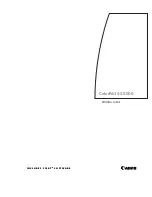
81
TERMINAL SERVERS
4.13 Configuring Security Options
4.13.1 U
SER
S
ECURITY
L
EVELS
Three levels of security are available for Terminal Server ports:
• Privileged status—The user at a privileged port has access to the entire
Terminal Server command set including commands that manage the
Terminal Server, its ports, its sessions, and its services.
Any user who knows the privileged password can set a port’s status to
privileged with the SET PRIVILEGED command. For security reasons,
a Terminal Server usually has only one privileged user—the person
managing the Terminal Server.
• Non-privileged status—Non-privileged status is the default for all
interactive ports. Users at a non-privileged port cannot access commands
that change the state of the Terminal Server or other ports, but they can
use all commands required for connecting to LAT services and Internet
hosts from an interactive port.
Non-privileged users can also modify certain port characteristics and
display information about the Terminal Server, its port, and service
nodes.
• Secure status—Secure status restricts the commands that are available on
a port to a subset of the non-privileged commands. This subset includes
commands that are required for connecting to Telnet services and
Internet hosts from that particular port. Secure users have access to only
limited display information and cannot use the broadcast feature that is
available to non-privileged users. Also, secure users cannot use CHANGE
and DEFINE commands (only the SET keyword is valid).
All commands that you can enter from a secure port are identified in
Chapters 6, 7,
and
8
, by the designation “secure.” To view all secure
commands, issue the SET PORT SECURITY ENABLED command and
then access the Terminal Server online help. The commands listed will
be those available to secure users.
Summary of Contents for LE2101A-BT-R2
Page 2: ......
















































